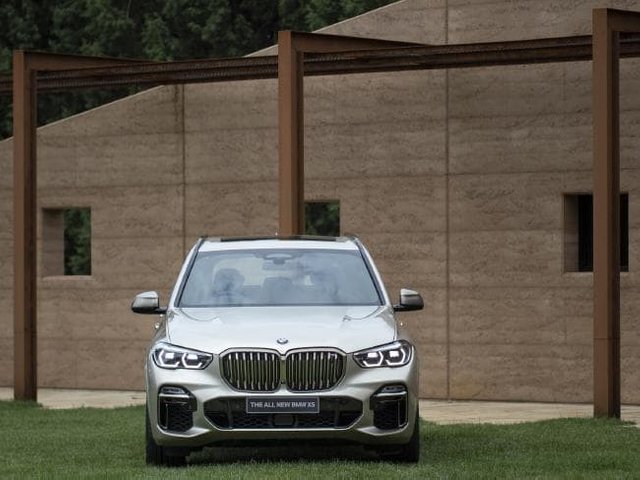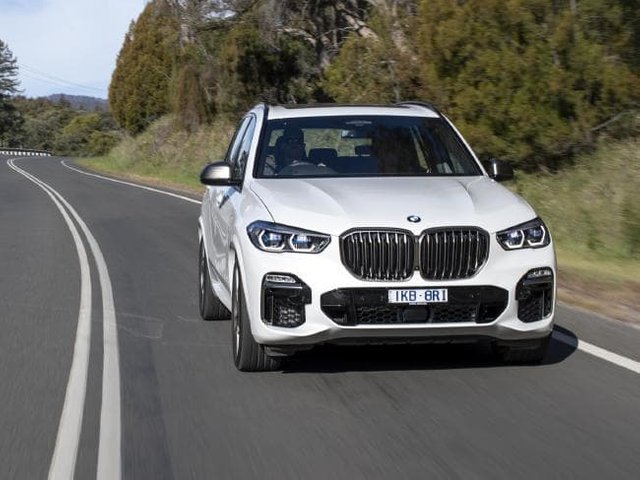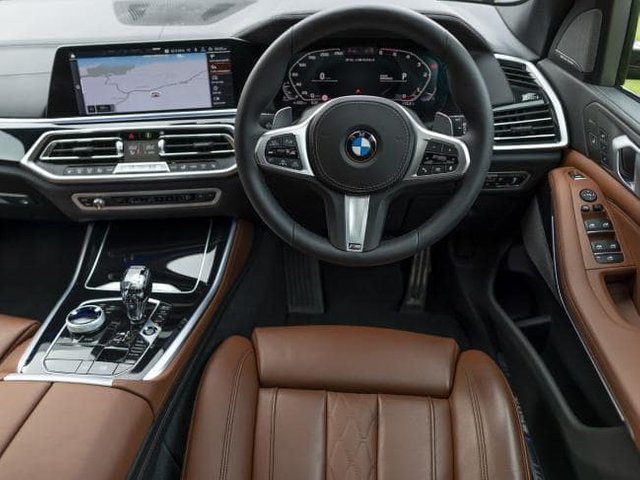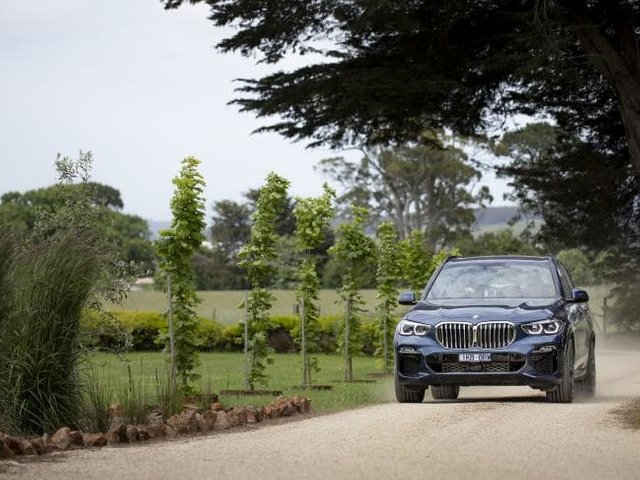BMW’s top-shelf SUV ups the X-factor: no options needed and no price rise
BMW’s top-shelf SUV ups the X-factor: no options needed and no price rise

MW’s first X5 launched in 2000, immediately became the benchmark against which all other SUVs have since been judged.
It’s the world’s most popular luxury SUV, with global sales of more than 2.2 million over three generations. In Australia, where BMW sells more SUVs than cars, as the flagship of the X family it’s arguably the company’s most important model.
So the fourth-generation X5, in common with its predecessors, refines a proven formula rather than reinventing it.

We’re testing the xDrive 30d, the top selling variant with a 3.0-litre straight-six turbo diesel, eight-speed automatic and all-wheel drive. At $112,990 plus on-roads, it costs the same as the third generation it replaces.
Shock — German car company releases new model with no price rise! Times must be tough.
BMW X5: No price rise and no options required (but there’s a long, indulgent list)
BMW X5: No price rise and no options required (but there’s a long, indulgent list)
Only dedicated X5 spotters will notice the slightly sharper sheetmetal. Gen IV, however, has expanded in all directions, notably in width and wheelbase.
It’s still a five-seater, with a third-row option; a better bet if you want seven spacious seats is the extended wheelbase X7, due in March.
Serious effort has gone into upgrading infotainment and connectivity on this model, in response to sophisticated new interfaces from Audi and Mercedes.
Live Cockpit Professional, as BMW calls it, includes digital instruments, the seventh iteration of iDrive, a built-in SIM card that gives access to information and assistance services (and automatically downloads system updates), smartphone integration via the BMW Connected app and a new head-up display.
Pick the difference: Body is larger overall but styling is familiar
Pick the difference: Body is larger overall but styling is familiarSource:Supplied
You can lock and unlock the car just by holding your smartphone close to the external door handles. When you place it in the phone tray, you can start the engine.
In standard nick, you get everything you need and a fair share of frills, too, so you don’t really have to cough up extra for options.
You can easily push the drive-away price north of $150,000 if you do but the more you spend the further you’ll slide towards the negative side of the cost/benefit ledger.
Adaptive LED headlights, automatic high-beams, 20-inch alloys with run-flat tyres (plus a space-saver spare), adaptive suspension dampers, sunroof, power-operated and hands-free tailgate (still horizontally split), leather upholstery and power adjustable sports seats are included.

I can’t tell you what the ride is like in standard form. Our car’s set-up — adaptive air suspension, 21-inch alloy wheels and low-profile tyres package — came entirely from the options list.
As tested, the ride varied from plush in Comfort mode to predictably terse though still acceptably compliant in Sport. On a very rough road, the front end can occasionally run of travel and give the body a whack.
X5 cockpit: Slick design but efficiency is not up to rivals’ level
X5 cockpit: Slick design but efficiency is not up to rivals’ levelSource:Supplied
The dash is beautifully designed and finished but the new infotainment is still to be thoroughly debugged and doesn’t work as efficiently as it should.
Compared with Audi and Mercedes, BMW’s digital instruments lack the same level of customisation, voice control is erratic and at times nonsensical in its response, gesture control is haphazard (as it is on rivals) and iDrive has become less intuitive. Such simple things as changing radio bands and frequencies should not be this complicated.
Relatively small dash vents also struggle to flow enough cooling air into the cabin on a 35-40 degree ’Strayan summer day, so you have to wind up the fan speed to gale force, which makes a lot of noise.
Plank-like, the rear bench is spacious enough but the backrest is not adjustable and tall passengers sit lightly knees-up. The second row gets vents in the centre console and door pillars plus ample storage, 12V socket and two USB Type C connectors.
SAFETY
No options required, as you would expect. Active steering, stop and go adaptive cruise,
360 degrees/helicopter view camera coverage and automatic parking are included.
DRIVING
It’s a toss up between the X5 and the Porsche Cayenne for best-in-class dynamics. The BMW is a tight, responsive wagon that can be punted along a winding road — sealed or dirt — with complete composure and control at speeds that would confound lesser SUVs.
Top-shelf dynamics: Stick to the bitumen or the country estate’s gravel drive
Top-shelf dynamics: Stick to the bitumen or the country estate’s gravel drive,

Serious off-roading is beyond its brief, though. If you want to go outback adventuring in luxury, don’t waste $7500 on the X5’s off-road option package, which is more wishful thinking than useful hardware. Get a Toyota 200 Series LandCruiser Sahara instead.
BMW’s 3.0-litre turbo diesel packs immediate throttle response, serious grunt from idle to redline, outstanding refinement and close to four-cylinder fuel efficiency — 6.5L-8L/100km on the highway and 9L-11L in town.
BMW claims 0-100km/h in a believable 6.5 seconds. Not bad for a diesel dragging nearly 2.2 tonnes around. The eight-speed automatic works so smoothly and efficiently you don’t even notice it.